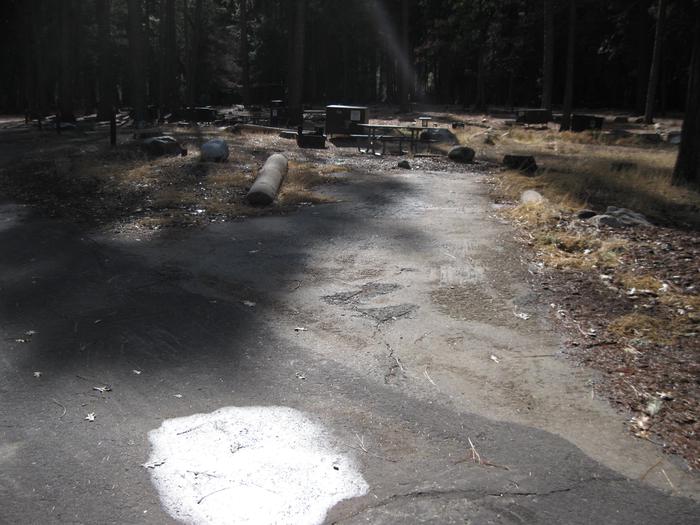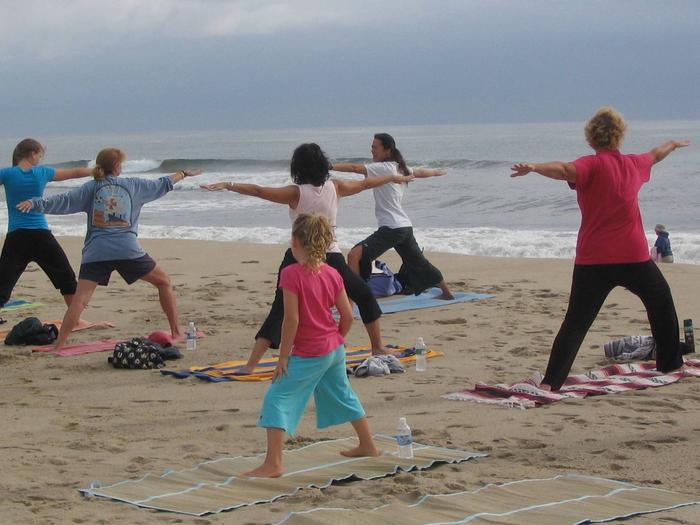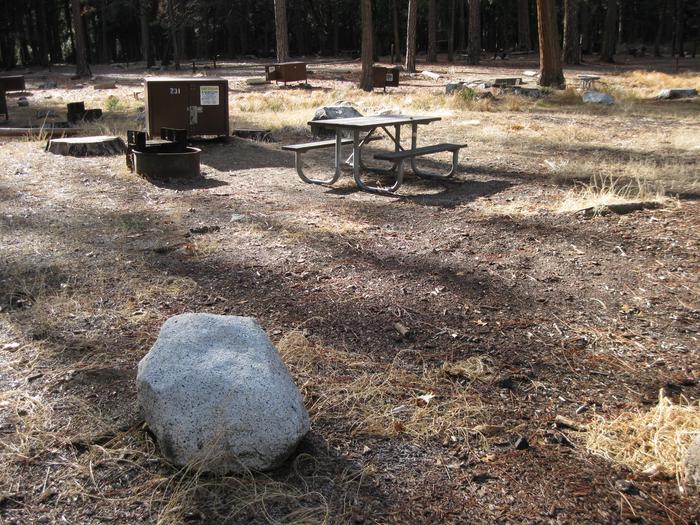Ashtabula Lake

The Baldhill Dam, Lake Ashtabula Project is located in eastern North Dakota, in the heart of the prairie pothole country. It is a multipurpose project, providing flood protection, augmenting water supplies during dry years, and offering wildlife habitat and recreational opportunities year-round. One of the unique seasonal wildlife visitors to the project is the white pelican, which can be seen in many areas around the lake.




RecAreaDirections
Take the Valley City exit #292 from I-94, follow signs to county road 19, northeast about 12 miles.
Open with Google MapMisc
| Stay Limit | |
| Reservable | false |
| Keywords | |
| Map Link | |
| Contact Phone | |
| Contact Email |
Permits info
Facilities
WEST ASHTABULA CROSSING Campground
List of CampsitesOverview
West Ashtabula Crossing Campground is located on 23 developed acres adjacent to Lake Ashtabula in eastern North Dakota. It is very popular and fills up on most weekends.Lake Ashtabula was created by the construction of the Baldhill Dam on the Sheyenne River in 1944, and is situated in one of the most scenic river valleys in the region, offering visitors a wide range of recreation opportunities year-round.
Summer activities include fishing, boating, swimming and picnicking, while Ice fishing and cross-country skiing are popular during winter months.
Recreation
The name "Ashtabula" is a Native American word meaning "Fish River," which suits the lake's fish population; popular species include walleye, northern pike, white bass, yellow perch and black bullhead. With seven boat ramps, three accessible fishing piers and four automated fish cleaning stations, the lake is very convenient for anglers. Nearly 3,000 acres of land around the lake is managed as wildlife habitat by the Corps of Engineers and open to the public for wildlife viewing, birding, hiking and hunting. Hunters and anglers should contact the North Dakota Game and Fish Department for seasons, restrictions and licenses; fishing licenses and bait may be purchased from concessionaires around the lake. Campers can also reach the 63-mile Sheyenne River Valley National Scenic Byway nearby and access the North Country National Scenic Trail from the campground.Facilities
West Ashtabula Crossing has 38 campsites, 26 of which offer electric hookups. The facility also features a boat launch, dump station, fishing pier, fish cleaning station and picnic shelter.Campers will find a swimming beach, playground and restaurant less than one mile away. The nearest town is Valley City, 15 miles south.
Natural Features
The campground is on a wooded hillside offering shade for most sites. It lies amidst the 'prairie potholes' region of glacially-carved lakes in North Dakota.Spring and fall bring bountiful views of migratory water birds to Lake Ashtabula, including the unique white pelican, which can be seen in large flocks during summer.
The lake region also provides habitat for white-tailed deer, sharptail grouse, wild turkey and gray partridge.
EAST ASHTABULA CROSSING Campground
List of CampsitesOverview
The East Ashtabula Crossing Campground is located on 12 developed acres adjacent to Lake Ashtabula in eastern North Dakota. It is one of the most popular campgrounds in the area.Lake Ashtabula was created by the construction of the Baldhill Dam on the Sheyenne River in 1944, and is situated in one of the most scenic river valleys in the region, offering visitors a wide range of recreation opportunities year-round.
Summer activities include fishing, boating, swimming and picnicking, while Ice fishing and cross-country skiing are popular during winter months.
Recreation
The name "Ashtabula" is a Native American word meaning "Fish River," which suits the lake's fish population; popular species include walleye, northern pike, white bass, yellow perch and black bullhead. With seven boat ramps, three accessible fishing piers and four automated fish cleaning stations, the lake is very convenient for anglers. Nearly 3,000 acres of land around the lake is managed as wildlife habitat by the Corps of Engineers and open to the public for wildlife viewing, birding, hiking and hunting. Hunters and anglers should contact the North Dakota Game and Fish Department for seasons, restrictions and licenses; fishing licenses and bait may be purchased from concessionaires around the lake. Campers can also drive the 63-mile Sheyenne River Valley National Scenic Byway and access nearly 35 miles of the North Country National Scenic Trail nearby.Facilities
East Ashtabula Crossing has 38 campsites, 32 of which offer electric hookups. The facility also features a swimming beach, drinking water, flush toilets, a playground and a picnic shelter.Within walking distance campers will find a dump station, fishing pier, boat ramp, restaurant and hiking trails. The nearest town is Valley City, less than 15 miles away.
Natural Features
The campground is on a wooded hillside offering shade for most sites. It lies amidst the 'prairie potholes' region of glacially-carved lakes in North Dakota.Spring and fall bring bountiful views of migratory water birds to Lake Ashtabula, including the unique white pelican, which can be seen in large flocks during summer.
The lake region also provides habitat for white-tailed deer, sharptail grouse, wild turkey and gray partridge.
MEL RIEMAN REC Campground
List of CampsitesOverview
The Mel Rieman Campground and Recreation Area is a 70-acre facility on the shoreline of Lake Ashtabula in eastern North Dakota. The campground is known for its spectacular sunset views. It is close to the Baldhill Dam and within walking distance of the Mel Rieman day-use area, where visitors can swim, fish and picnic.Lake Ashtabula was created by the construction of the Baldhill Dam on the Sheyenne River in 1944, and is situated in one of the most scenic river valleys in the region. Visitors can choose from a wide range of recreation opportunities year-round, including ice fishing and cross-country skiing during winter months.
Recreation
There is no shortage of recreation opportunities and outdoor fun in and around the lake. The day-use area is adjacent to the campground and has a visitor center, playgrounds, picnic facilities, concessions, fishing spots and a boat ramp.The name "Ashtabula" is a Native American word meaning "Fish River," which suits the lake's fish population; popular species include walleye, northern pike, white bass, yellow perch and black bullhead. With seven boat ramps, two accessible fishing piers and four automated fish cleaning stations, the lake is very convenient for anglers.
Nearly 3,000 acres of land around the lake is managed as wildlife habitat by the Corps of Engineers and open to the public for wildlife viewing, birding, hiking and hunting. Hunters and anglers should contact the North Dakota Game and Fish Department for seasons, restrictions and licenses; fishing licenses and bait may be purchased from concessionaires around the lake.
Campers can also reach the 63-mile Sheyenne River Valley National Scenic Byway and access nearly 35 miles of the North Country National Scenic Trail within a short drive.
Facilities
Mel Rieman Campground has 27 campsites, 15 of which offer electric hookups. The facility also provides drinking water, showers and flush toilets. The nearest town is Valley City, 10 miles away.Natural Features
The lake area lies amidst the 'prairie potholes' region of glacially-carved lakes in North Dakota. Bountiful migratory water birds flock to Lake Ashtabula, including the unique white pelican, which can be seen in large quantities during summer. The region also provides habitat for white-tailed deer, sharptail grouse, wild turkey and gray partridge.EGGERTS LANDING Campground
List of CampsitesOverview
The Eggerts Landing Campground is located on Lake Ashtabula in eastern North Dakota. With thick forests, secluded sites and lake access, it is the most popular campground in the area.Lake Ashtabula was created by the construction of the Baldhill Dam on the Sheyenne River in 1944, and is situated in one of the most scenic river valleys in the region, offering visitors a wide range of recreation opportunities year-round.
Summer activities include fishing, boating, swimming and picnicking, while Ice fishing and cross-country skiing are popular during winter months.
Recreation
There is no shortage of recreation opportunities and outdoor fun in and around the lake. Visitors can swim, picnic and hike within the campground. A fishing pier is a short walk away. The name "Ashtabula" is a Native American word meaning "Fish River," which suits the lake's fish population; popular species include walleye, northern pike, white bass, yellow perch and black bullhead. With seven boat ramps, three accessible fishing piers and four automated fish cleaning stations, the lake is very convenient for anglers. Nearly 3,000 acres of land around the lake is managed as wildlife habitat by the Corps of Engineers and open to the public for wildlife viewing, birding, hiking and hunting. Hunters and anglers should contact the North Dakota Game and Fish Department for seasons, restrictions and licenses; fishing licenses and bait may be purchased from concessionaires around the lake. Campers can also reach the 63-mile Sheyenne River Valley National Scenic Byway and access nearly 35 miles of the North Country National Scenic Trail within a short drive.Facilities
There are 41 campsites with 37 of the sites offering electrical service. Other features of the campground include a swimming beach, flush toilets, playground and hiking trail.A dump station, fishing pier, boat ramp, restaurant and additional hiking trails are within walking distance. The nearest town is Valley City, 10 miles away.
Natural Features
The campground is heavily wooded offering shade and privacy for most sites. The lake area lies amidst the 'prairie potholes' region of glacially-carved lakes in North Dakota.Spring and fall bring bountiful views of migratory water birds to Lake Ashtabula, including the unique white pelican, which can be seen in large flocks during summer.
The region also provides habitat for white-tailed deer, sharptail grouse, wild turkey and gray partridge.
West Ashtabula Crossing Facility
This recreation area is part of Ashtabula Lake
Bayshore Resort Facility
This recreation area is part of Ashtabula Lake

 CuteCamper
CuteCamper
